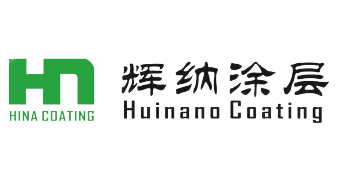Tool coating is also one of the issues that can improve tool life, and according to different cutting methods or environment, and can be divided into many different components, in technology can also be divided into chemical and physical, you are currently using the coating is correct? This article will introduce the coating technology and selection, so that you can better understand and choose the most suitable.
Carbide tool coating method
For nearly half a century, in order to improve the performance of the tool surface coating technology has become the mainstream, the coating is like the armor of the tool, with strong protection, acid resistance, oxidation resistance and wear resistance, can improve the hardness and thermal stability coefficient of the tool surface, and reduce the friction coefficient to improve the cutting speed, so as to improve the processing efficiency and improve the life of the tool. Tool coating technology can be divided into two categories: CVD (chemical) and PVD (physical) :
CVD
CVD, chemical vapor deposition, is a solid state material chemical technology that produces high purity and high efficiency. It is widely used in surface treatment of cemented carbide that can be converted into tools. For example, the semiconductor industry uses this technology to grow thin films. CVD is the reaction source in the form of gas into the reaction cavity, through oxidation, reduction reaction with the substrate chemical reaction, and then the product is deposited on the surface of the substrate by internal diffusion. Different by-products may be produced during the reaction, but most of them are carried away by the air flow and do not remain in the reaction chamber.
CVD technology is mainly used for hard and gold turning tool coating, suitable for medium and heavy cutting of high-speed processing, and compared with CVD equipment is simple, mature process, more types of sediment, high rate is easy to control, a high degree of permeability and uniformity, can obtain different organization of multilayer coating and uniform thickness, the most important is low process cost, suitable for mass production.
PVD
PVD refers to Physical vapor deposition, which is an industrial manufacturing industry. Deposition of thin films mainly by physical reactions, namely, vacuum deposition (evaporation). PVD is commonly used in surface treatment of cutting tools and various molds as well as fabrication of semiconductor devices. The difference between PVD and CVD is that PVD adsorption and absorption is physical, CVD is chemical, and PVD has a wide range of application, almost most of the material films can be used PVD, but the film thickness uniformity will be a problem.
PVD technology is mainly applicable to integral carbide cutting tools and high-speed tool steel tools, widely used in carbide drill bits, milling cutters, taps and welding tools coating processing, PVD coating temperature is lower than the tempering temperature of high-speed tool steel, so the hardness and dimensional accuracy will not be hurt, no need to heat treatment after coating. The thickness of the coating is only a few microns to maintain the original accuracy, the whole work is clean and pollution-free.
Type of coating
Relying solely on a single coating is unable to meet the requirements of improving various mechanical properties, so the composition of the coating is gradually diversified and composite, according to different cutting requirements, the coating can be divided into more complex, and in the composite coating, the thickness of each component of the coating is becoming thinner and thinner, and even tends to nano.
